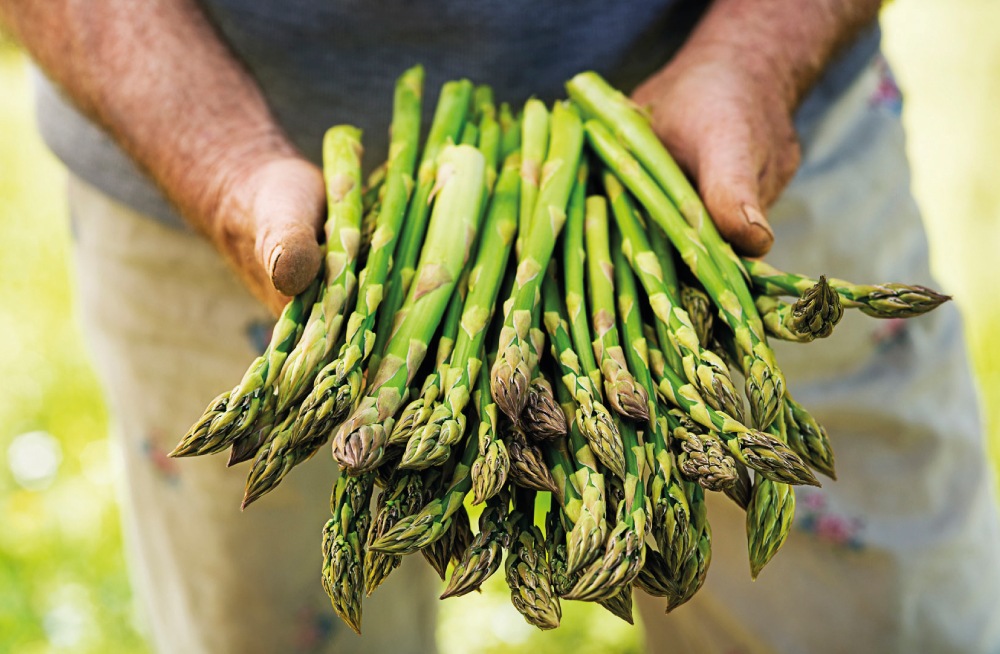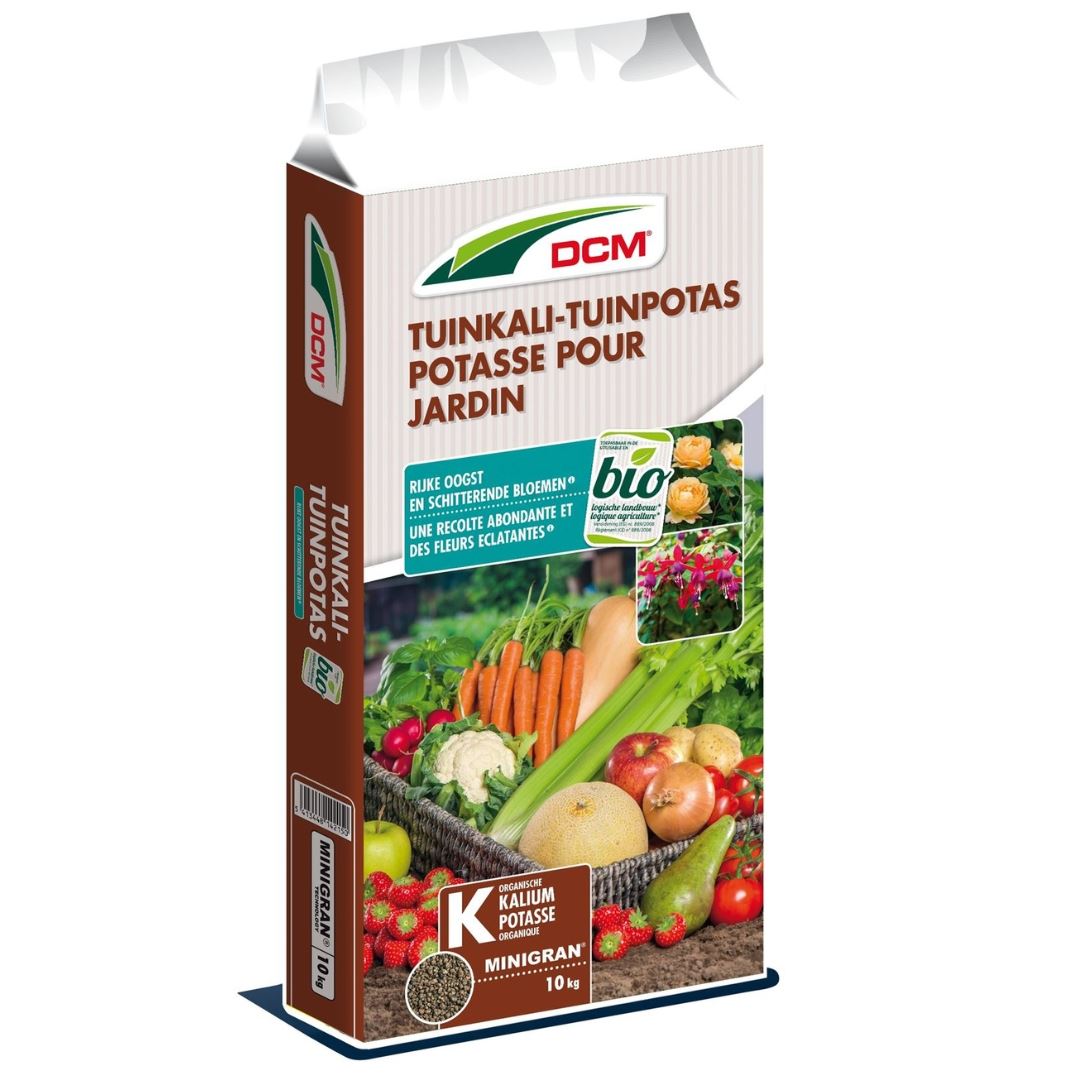
Grow your own delicious asparagus
We may call asparagus the white gold but they come in even more colors, like green & beautiful purple. The color of your asparagus depends on the variety you purchase but mostly on how you grow the asparagus. For example, some asparagus varieties allow you to grow both white and green asparagus. Do you grow them in full light? Then you'll get green asparagus. Do you hide the asparagus roots well underground? Then you'll get beautiful white ones.
Sowing or planting?
Unlike chicory roots, you can only grow asparagus in full soil and not in a tub or bucket. Also growing in the greenhouse is out of the question for this species, they like to be in the open air. Asparagus roots are a seasonal product, and are only available from mid-March to the end of April. Fortunately, you can make reservations as early as February. You can also sow yourself, and wait for the seeds to grow into asparagus roots. But the whole process from sowing to a ready-to-harvest asparagus takes about three years. Buying the carrots directly, however, saves you a lot of time and work. You gain as much as two years compared to sowing. Growing asparagus requires some patience but you get a great product in return. No wonder they are sometimes called the white gold. Fortunately, the plant is a real survivor, and you can grow asparagus for 12 to 15 years with the same roots.
The perfect location
White asparagus is more demanding than the green variety. The latter do not need to go too deep into the ground and can also be grown in heavier soil. White asparagus, on the other hand, requires a light and well-drained soil. They can also appreciate a humus-rich stand. White asparagus needs a light soil because they will root very deep. Do you have a problem with clay soil? Then be sure to add sand to make the soil lighter! Asparagus likes it warm so pick a spot where they can enjoy lots of sunlight. They don't like wet feet so definitely don't plant them in a damp plot and preferably not in a location where root vegetables have been in recent years.

Asparagustip from Marcel
Mix some rhine sand or lighter soil and enough organic material (e.g. compost) into the planting trench where you are planting the asparagus roots. In this way you immediately create a locally lighter soil.
Rolling up our sleeves: planting
The first job, of course, is to dig a planting trench (70 cm wide) in which the asparagus can grow for the next few years. For the white & purple asparagus make sure you dig a planting depth of 25 cm, and for the green asparagus dig a trench 15 cm deep. Leave 1.5 to 2 m distance between each planting trench and plant 1 asparagus plant every 30 cm so they have enough space to grow. After planting, you can add some mature compost as fertilizer. This way the asparagus roots will get a good start. Are you suffering from clay soil? Then add some sand to make the soil lighter!
Place the heart of the root at a depth of 15 to 20 cm. Make sure that the roots with the growing points are in the longitudinal direction of the beds. This is important because they will sprout in that direction! After planting, put some soil back into the trench so you can't see the asparagus anymore but be careful not to damage the roots! Also, take a moment to measure the pH level of the soil. A value of 6.8-7 is ideal and will provide whiter & prettier asparagus, with even better flavor! During the second growing year it is important that the asparagus claws are continuously covered with a good layer of soil.

Asparagustip from Marcel
Use black cover film or a ground cloth. This will warm the soil faster and avoid weed growth. Another advantage is that the asparagus roots will push the plastic upwards, allowing you to spot the asparagus ready for harvest immediately! Make sure that there is still enough air circulation to avoid mold.
Fertilizing
As indicated, it is better to mix in some organic material when planting so that the asparagus roots have enough reserves for the next few years. To avoid exhausting the soil, it is better to fertilize the asparagus beds with a potassium-rich fertilizer. During the winter you should also sprinkle seaweed calcium (300 to 400 gr/m²) every year.
After planting: have to wait
Growing asparagus is a long-term job, but it's worth it! You can harvest from the same asparagus plants for 10 to 15 years! So you don't have to buy new seed potatoes every year, which is the case with onions and potatoes. The yield increases in the first years up to 400 grams per plant.
Time to harvest!
As soon as the asparagus show their head above the ground and have a diameter of 1 cm, they must be harvested immediately (April/May/June). For this you use a special asparagus cutter. You can also leave the asparagus to grow a little longer but then you should cover them with a flowerpot full of soil. Otherwise the asparagus will become tough and discolored.
Little known fact: do you cook the purple asparagus after harvesting? Then they will turn a green color!
This is how you store the asparagus roots
The asparagus roots their delicious & delicate flavor comes out best immediately after harvesting. So eat them as soon as possible! Still want to keep them for a few days? Then you can keep them fresh in a damp cloth in the refrigerator.
Looking for more helpful tips for growing seed potatoes?
More info? Receive all our gardening tips directly in your mailbox!
We'll only email you handy facts, green advice and our best promotions & discounts. You'll receive it about once a week and you can unsubscribe at any time. No spam, promise 🤞












